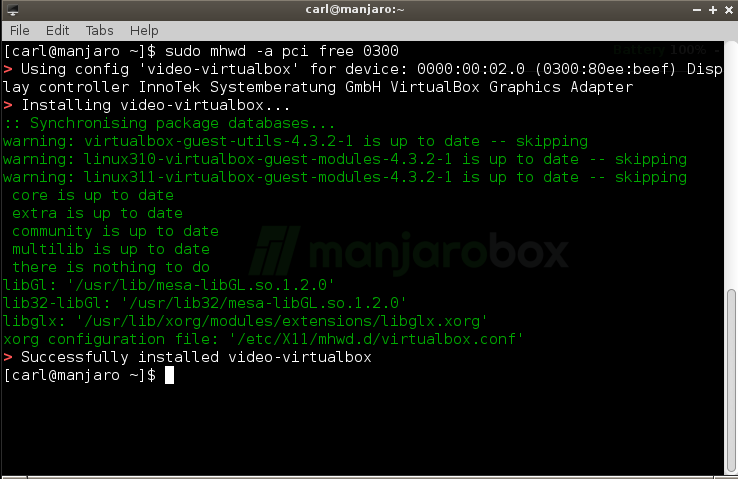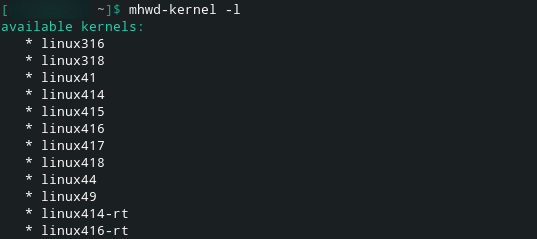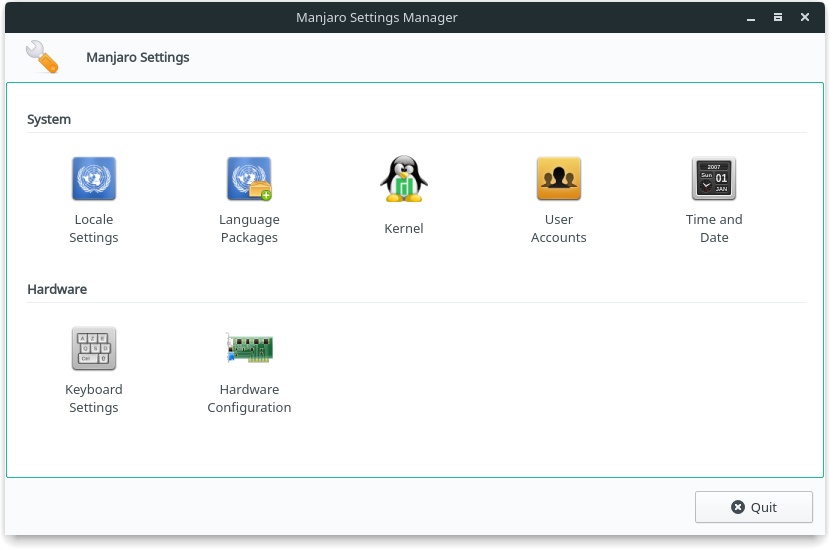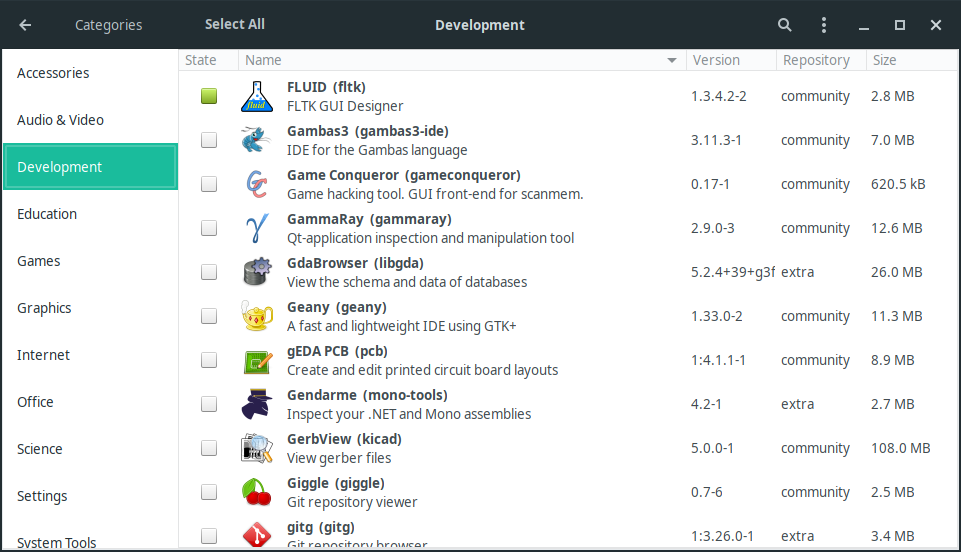Difference between revisions of "Manjaro:A Different Kind of Beast/es"
Views
Actions
Namespaces
Variants
Tools
(Updating to match new version of source page) Tags: Mobile web edit Mobile edit |
(Updating to match new version of source page) Tags: Mobile web edit Mobile edit |
||
| Line 28: | Line 28: | ||
}} | }} | ||
When reading Manjaro documentation either on this Wiki or the forum you will often see an expression such as '''latest stable''' or '''latest LTS''' and those | When reading Manjaro documentation either on this Wiki or the forum you will often see an expression such as '''latest stable''' or '''latest LTS''' and those are the terms used by the upstream project. | ||
A '''stable''' kernel is '''NOT LTS''' - a subtle but very important difference. | A '''stable''' kernel is '''NOT LTS''' - a subtle but very important difference. | ||
When a Manjaro ISO is released it contains the latest Long | When a Manjaro ISO is released it contains the latest Long Term Support (LTS) as defined by upstream kernel project. This practise makes it possible to install Manjaro and keep it running using the LTS kernel - if not for ever - then for a very long time. | ||
The latest and greatest hardware may have poor or non existing support using the LTS kernel. Such hardware will require you to use what is referenced as the '''stable''' kernel. | The latest and greatest hardware may have poor or non existing support using the LTS kernel. Such hardware will require you to use what is referenced as the '''stable''' kernel. | ||
Latest revision as of 06:53, 20 August 2024
A pesar que Manjaro esta basado en Arch y tambien compatible con este, no es Arch. Como tal, lejos de ser solo una versión fácil de instalar o preconfigurada de Arch, Manjaro es una distro muy diferente.
Asi que, las diferencias entre Manjaro y Arch son realmente grandes que las de la popular distribución de Ubuntu y sus muchos derivados, incluidos Mint y Zorin. Para ayudar a proporcionar una comprensión más clara de Manjaro, se han descrito algunas de sus características principales.
- Manjaro es desarrollado independientemente de Arch y por un equipo completamente diferente.
- Manjaro esta diseñado para ser accesible a nuevos usuarios, mientras que Arch a usuarios experimentados.
- Manjaro extrae software de sus propios repositorios independientes. Estos también contienen paquetes de software no proporcionados por Arch..
- Manjaro proporciona sus propias herramientas especificas como la utilidad Manjaro Hardware Detection (mhwd) y Manjaro Settings Manager (msm).
- Manjaro tiene numerosas diferencias sutiles en cuanto al funcionamiento en comparación con Arch
.
A continuación se proporciona un esquema más detallado de estas diferencias.
When reading Manjaro documentation either on this Wiki or the forum you will often see an expression such as latest stable or latest LTS and those are the terms used by the upstream project.
A stable kernel is NOT LTS - a subtle but very important difference.
When a Manjaro ISO is released it contains the latest Long Term Support (LTS) as defined by upstream kernel project. This practise makes it possible to install Manjaro and keep it running using the LTS kernel - if not for ever - then for a very long time.
The latest and greatest hardware may have poor or non existing support using the LTS kernel. Such hardware will require you to use what is referenced as the stable kernel.
The stable kernel goes End Of Life (EOL) when the next mainline becomes stable which happens roughly every 2 months. If you are using the stable kernel - not LTS - you will have to ensure you are syncing the next stable kernel.
A stable kernel on Manjaro is never synced to the next stable kernel like you may be used to with an Arch Linux install.
If you neglect you are running an EOL kernel you will get various driver issues - most prominently Nvidia drivers - when the EOL kernel is removed from the repo. Such issues is not a Manjaro fault but a fault of the system admin who neglected proper system maintenance.
Otra característica que diferencia a Manjaro de Arch y otras distribuciones basadas en esta ultima, es su enfoque en herramientas para facilitar el mantenimiento general del sistema. Esto va mucho más allá de proporcionar un instalador gráfico sencillo y entornos de escritorio preconfigurados. Manjaro también proporciona una serie de potentes herramientas desarrolladas exclusivamente por el equipo de Manjaro.
El comando mhwd permite la detección y configuración automática de tu hardware por ti, normalmente realizada durante el proceso de instalación. Esto incluye soporte para tarjetas gráficas híbridas, así como la configuración de todo, como las dependencias de los módulos para las instalaciones de máquinas virtuales de Virtualbox; sin embargo, también puede ser utilizado por los usuarios con conocimientos técnicos limitados para llevar a cabo fácilmente esta tarea por sí mismos.
Una guía de como configurar manualmente las tarjetas graficas ha sido proporcionada.
Mientras que el soporte automático para el uso de múltiples kernels es una característica definitoria de Manjaro, el comandomhwd-kernel también permite a los usuarios sin conocimientos técnicos gestionarlos fácilmente. Esto incluye la actualización automática de cualquier núcleo recién instalado con cualquier módulo que se utilice, como los necesarios para ejecutar Manjaro dentro de Virtualbox.
Una guía de como administrar los kernels ha sido proporcionada.
Esta aplicación de fácil uso te permite gestionar rápida y fácilmente las cuentas de usuario, instalar nuevos paquetes de idiomas e incluso cambiar el idioma y la distribución del teclado por defecto de tu sistema. msm también te notificará automáticamente cualquier actualización disponible para los paquetes de idiomas instalados.
Recientemente se han añadido nuevas funciones, como la facilidad para elegir e instalar entre varios kernels y controladores para tu tarjeta gráfica.
Aquí encontrará explicaciones más detalladas sobre Gestor de configuración de Manjaro.
Desarrollada exclusivamente por el equipo de Manjaro, esta intuitiva aplicación te permite buscar, instalar, eliminar y actualizar fácilmente aplicaciones y paquetes de software. pamac también te notificará automáticamente cualquier actualización; ¡Mantén tu sistema al día con un solo clic!
Hay explicaciones más detalladas disponibles para el Gestor de paquetes Pamac.



